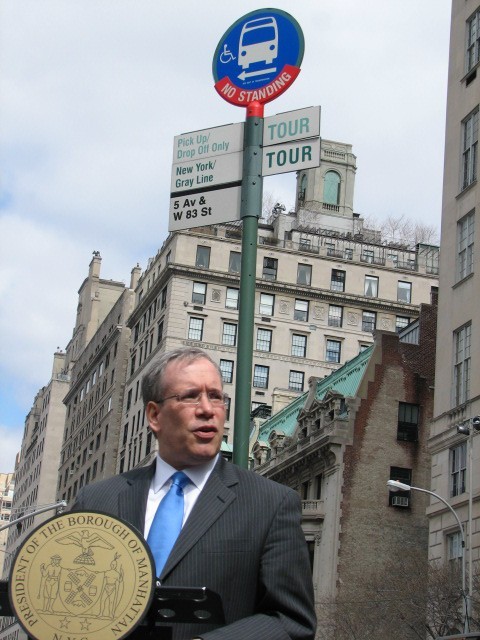
Election Day is more than a year away, but the race to become the next mayor of New York City is well-underway. In the last two issues of its magazine, Reclaim, Transportation Alternatives has been asking the would-be mayors for their thoughts on transit (in the more recent interviews, one question about cycling was added). So far, TA has received responses from all of the major candidates except 2009 Democratic nominee Bill Thompson.
All this week, Streetsblog will be re-printing the candidates' responses. Here are the answers TA received from Manhattan Borough President Scott Stringer.
Q: What role does a well-funded public transit system play in New York City’s economic growth?A: Simply put, the public transit network enables the City to be the world’s financial center, a magnet for tech startups, a global leader in culture and art, and a place that people of all backgrounds can call home. During the “bad old days” of the 1970s, subways broke down once every 7,000 miles. Today, after the City, State, and MTA committed to investing over $100 billion for capital improvements to the system, subways break down once every 170,000 miles. It’s no surprise that the rebirth of the subway system—both its reliability and its safety— went hand in hand with the economic boom of the City.
Q: What would you do as mayor to address transit deserts, which are locations where riders are faced with hour-plus commutes, multiple transfers or multi-fare rides?A: The fact is that there is no single solution to the problem of transit deserts. Some possible solutions include transforming the dilapidated North Shore Rail Line to BRT or light rail, expanding bus rapid transit to Nostrand Avenue and other crowded corridors and examining the potential for expanded ferry service. No matter what the proposed solutions, one thing is certain: these deserts disproportionately affect working class New Yorkers, and working class New Yorkers need a true advocate in the Mayor’s office. That starts with a Mayor who prioritizes public transit.
Q: If transit fares go up on 1/1/13, it will be the fifth fare hike since 2008. Do you think transit riders are paying their fair share, and is it time for elected officials to seriously consider new sources of revenue for public transit?A: Continued fare hikes will only put more pressure on a middle class that is increasingly being squeezed out of New York. Today, the State and City provide only 13 percent of the MTA’s operating budget. We can and must do better. Only by examining all options will we be able to create a fair, sustainable revenue stream for transit. But if we’re going to talk about new revenue, we also need to talk about the cost of MTA Capital Projects compared to projects in other cities. MTA projects end up costing five, six, even seven times as much as similar projects in London, Paris, Berlin, and Tokyo. So, yes, let’s work for new dedicated revenue streams for the MTA, but let’s also make every dollar count.





